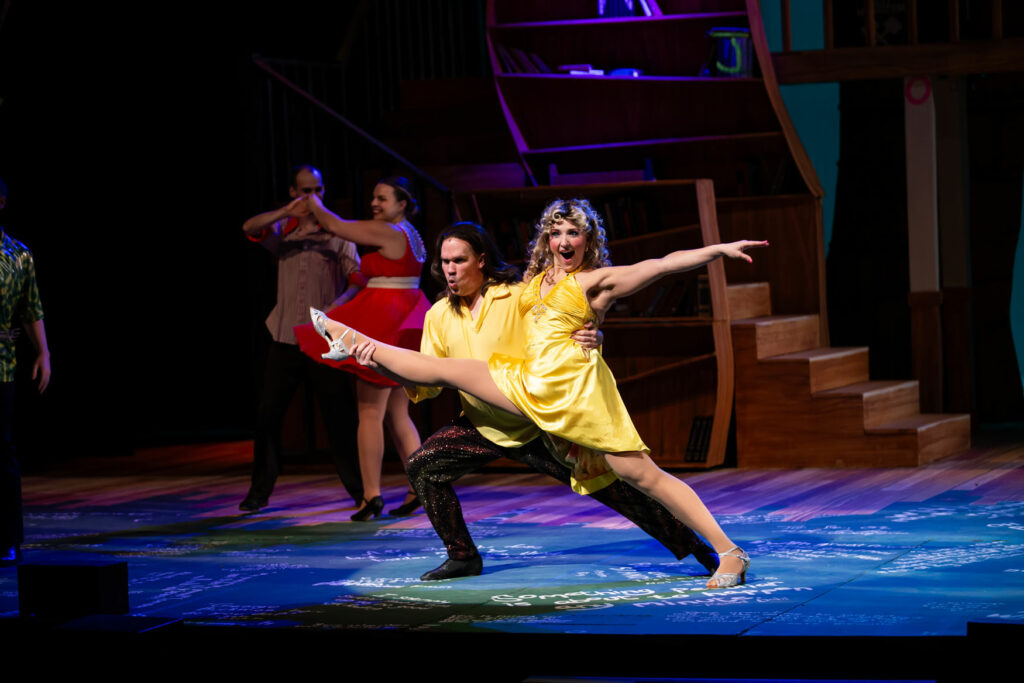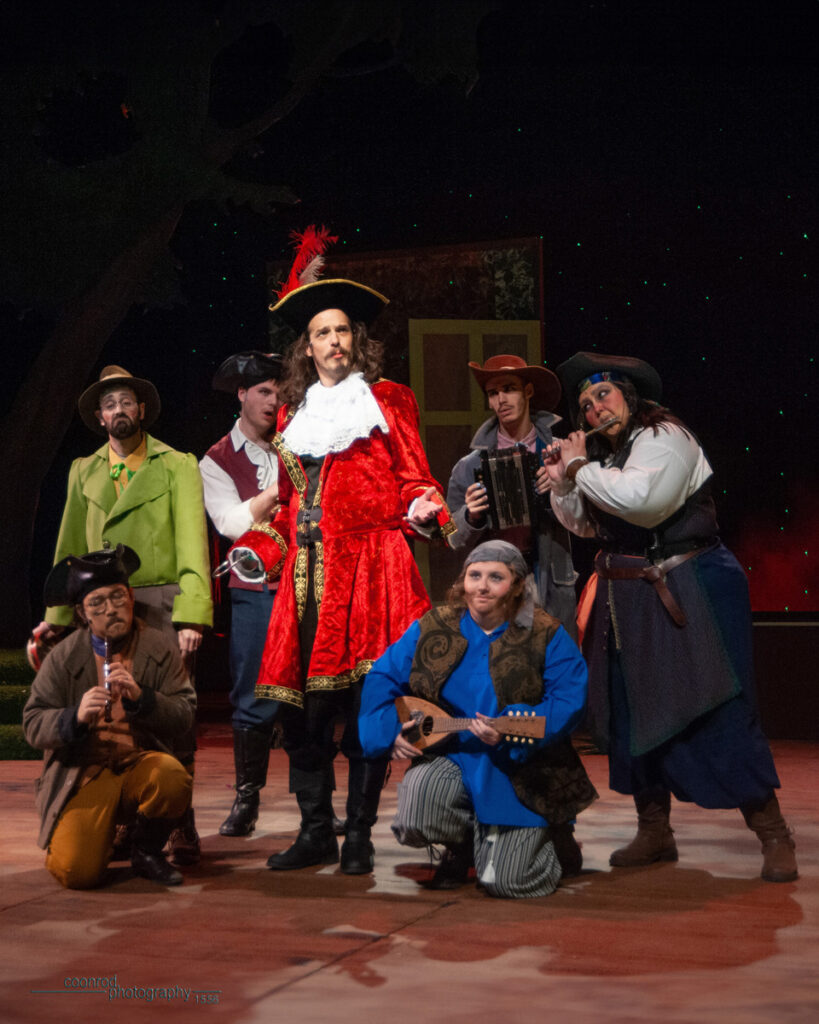Behind the Costumes with QCT Costume Shop Manager Jayden Dreyer
“Where do you get all your costumes?” is a question I answer at least once a week. Whether I am welcoming patrons into the Costume Shop, or meeting with renters at Deep Storage (where over 8,000 costume pieces currently reside), the answer is always on the front of my mind. In this blog, I will take you behind the blue velvet curtain and into the inner workings of the costume world.

So, where do we get all our costumes? Trust me, during Strike as I’m doing laundry, I ask myself the same question! The truth is our costumes have just as much of a story to tell as the stories we put on the stage. We have pieces that were donated to us, pieces that we scoured thrift stores to find, pieces that were bought new, and pieces that were made from scratch to fit a specific show and a specific actor.
While buying new things is convenient and conventional in today’s society, the magic of seeing that perfect costume walk through the door in the hands of a person who just wants to give it a new life is undeniable. As you study a wedding dress in our stock, you can imagine the day it was worn, some twenty years ago, some one hundred years ago. The necklines, sleeves, and details tell you about the person who wore them: a tall girl, who was modest but loved sparkle and to stand out; or a petite lady, who was likely getting married later in life. Yes, I can tell all of this just from studying a wedding dress.
One of my favorite donation memories is that of an older woman who had saved clothes from when she was a teenager. She brought in fancy dresses from years of collecting, some of which had never been worn. My eye caught on a royal blue Renaissance revival piece from the 70s. It had red and gold trim and looked like it had come straight from an old photograph. After noticing my interest, the owner said “Oh yeah… I used to wear this to concerts back when I was a teenager. I wore flowers in my hair… yeah, I used to be a hippie.” She smiled at the memory. I am overjoyed that her beloved dress gets to continue making smiles and telling stories.

In the Costume Shop, we also rely heavily on the volunteers who come in and make costumes from scratch. The feeling of wearing something that was made just for you is… gratifying, invigorating, and makes you feel special. At QCT, it is always our goal to make our volunteers feel special, but having a costume made just for you is an entirely different layer of extraordinary. The power of a costume that empowers is unquestionable. It adds a tier of understanding for the actor: how much money their character has, how the character should walk and hold themselves, where they’re coming from, what their job is, etc. From the audience’s point of view, the costumes add a layer of storytelling. Clothing from the correct period that matches the character’s persona and the ambiance of the show itself is vital in telling a harmonious story, and there are times when the only way to get that specific clothing is to make it ourselves.
The act of creating costumes from scratch is not as daunting as it sounds. Most of the time, you just need to be able to read, use a sewing machine, and be willing to learn and make mistakes. Volunteers who were seamstresses still mess up, and guess what? Almost everything can be fixed. There is a motto that can be heard during alterations week in the Costume Shop: “Could you see it on a dancing hippopotamus from thirty feet away?” Meaning, if you make a minor mistake, would the audience even notice it from where they’re sitting and with everything else going on? The answer is usually no.
For every show, there are costumes we make from scratch, and we are constantly looking for help to achieve those projects. Most recently, you might have seen Mrs. Wormwood’s transformation dress in the musical number “Loud,” Mrs. Darling’s lovely blue robe, Captain Hook’s threatening overcoat, or Marian’s dress in the library. All these costumes started as fabric in the Costume Shop. Without the help of volunteers to create these pieces, a fundamental layer of storytelling is lost. So, if you ever find yourself wanting to be a part of telling a story, learn something new, or make someone feel special, pull back the blue velvet curtain for yourself and join us.
